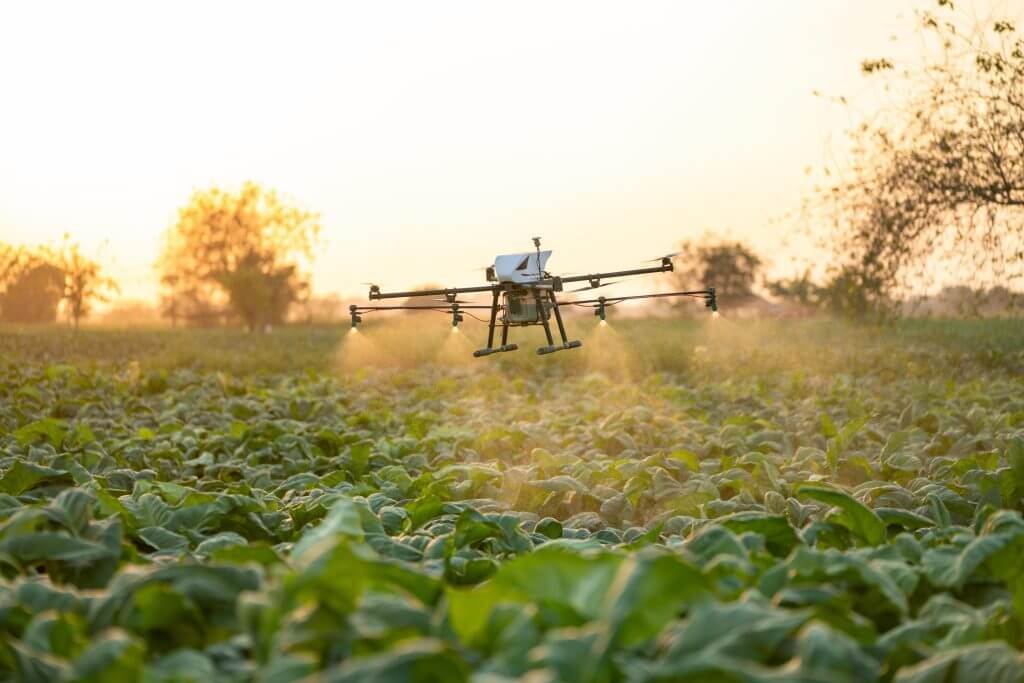
In the ever-evolving world of agriculture, drones are quickly becoming one of the most valuable tools in a farmer’s arsenal. From crop monitoring and mapping to precision spraying, agricultural drones are helping farmers increase efficiency, cut costs, and make smarter decisions. But as with any powerful tool, using drones comes with risks, and many operators, especially those new to UAVs, make avoidable mistakes that can lead to costly setbacks.
In this article, we’ll break down the top 5 most common mistakes agricultural drone operators make, and how the right insurance policy can protect you from financial loss when things don’t go according to plan.
1. Flying Without Understanding the Regulations
One of the most common and potentially dangerous mistakes is flying a drone without fully understanding the FAA regulations.
If you’re operating a drone commercially in the United States, including agricultural use, you must be Part 107 certified. If you’re applying chemicals or conducting spraying operations, you may also need a Part 137 exemption. Additionally, your state may require a pesticide applicator license.
The Risk: Flying without proper certifications can result in fines, legal trouble, and denial of insurance claims.
How Insurance Helps: Many comprehensive policies include legal defense coverage in the event of FAA investigations or alleged violations. However, having proper certification is often a condition of coverage—so getting it right from the start is critical.
2. Underestimating the Value of Maintenance and Pre-Flight Checks
Agricultural drones operate in tough conditions, dust, humidity, chemicals, and wind. Skipping regular maintenance or pre-flight inspections is like ignoring oil changes on a truck: it might work for a while, but eventually, something breaks.
The Risk: A $25,000 drone crashing due to a preventable motor failure can ground your operation, ruin crops, or even cause injury.
How Insurance Helps: Physical damage (hull) coverage can reimburse you for repair or replacement costs after an accident. Many policies require documented maintenance logs, so a strong maintenance routine can support your claim and reduce downtime.
3. Not Having the Right Type (or Amount) of Insurance
Many operators assume their farm policy covers drone use. Others buy the cheapest liability-only policy online and call it a day.
However agricultural UAVs require specialized coverage. Spraying drones, in particular, carry a heightened risk due to chemical drift and airspace violations.
The Risk: Inadequate insurance can leave you exposed to six-figure liability claims or total equipment loss with no reimbursement.
How Insurance Helps: A comprehensive agricultural drone insurance policy includes:
- Hull coverage for physical damage
- General liability (including chemical drift)
- Payload and sensors
- Errors & omissions for data or application issues
- Non-owned drone liability (if using leased or contracted UAVs)
Working with an experienced aviation insurance provider ensures you get the right policy tailored to your operations.
4. Ignoring Chemical Drift and Overspray Exposure
Spraying drones are game changers—but they also introduce new risks. One wrong gust of wind, or one missed calibration, and you could unintentionally damage neighboring crops, contaminate water sources, or cause allergic reactions in people nearby.
The Risk: Chemical drift claims can lead to lawsuits, regulatory scrutiny, and massive financial loss. In some states, overspray events are considered environmental violations.
How Insurance Helps: Chemical liability coverage is a critical part of any ag drone insurance policy. It protects you from third-party claims related to unintended chemical exposure.
Bonus Tip: Make sure your policy explicitly includes chemical drift protection—not all policies do.
5. Poor Data Handling and Documentation
Drones collect valuable data: crop health imagery, application records, flight paths, and more. But without a system to store and manage this data, you risk losing critical information that may be needed for compliance, client reporting, or insurance claims.
The Risk: Data loss, misapplication reports, or missing flight logs can leave you vulnerable in the event of a claim or legal dispute.
How Insurance Helps: Some policies include errors and omissions (E&O) coverage, which protects you if a mistake in your data results in client losses or damages.
Keeping detailed records, including maintenance, flight logs, and application reports will not only help you improve your operations but strengthen your insurance claims when something goes wrong.
Final Thoughts: Avoiding Mistakes, Protecting Your Investment
Agricultural drones are revolutionizing modern farming, but with great power comes great responsibility. Avoiding the five mistakes above is a good start, but no matter how careful you are, accidents and surprises happen.
That’s why it’s essential to carry the right insurance from a provider who understands both aviation and agriculture.
At BWI Aviation Insurance, we offer tailored agricultural drone insurance solutions designed to protect your UAVs, your business, and your future. With over 700 five-star reviews and decades of experience in aviation coverage, we’re ready to help you fly smarter, safer, and fully covered.
Request a custom quote today or call us at 800.666.4359 to speak with one of our drone insurance experts.
REQUEST A QUOTE TODAYContinue Reading


